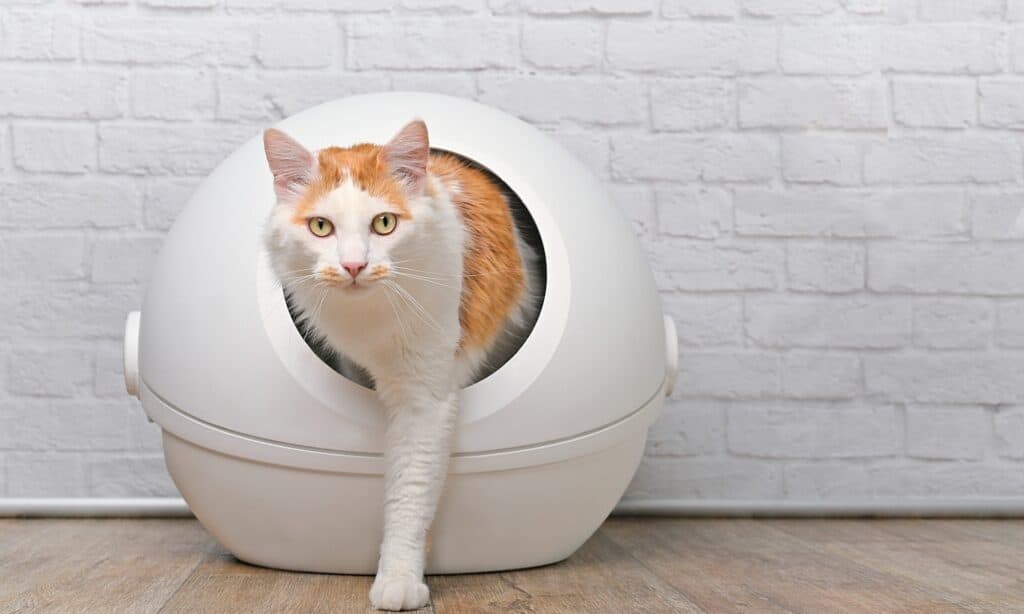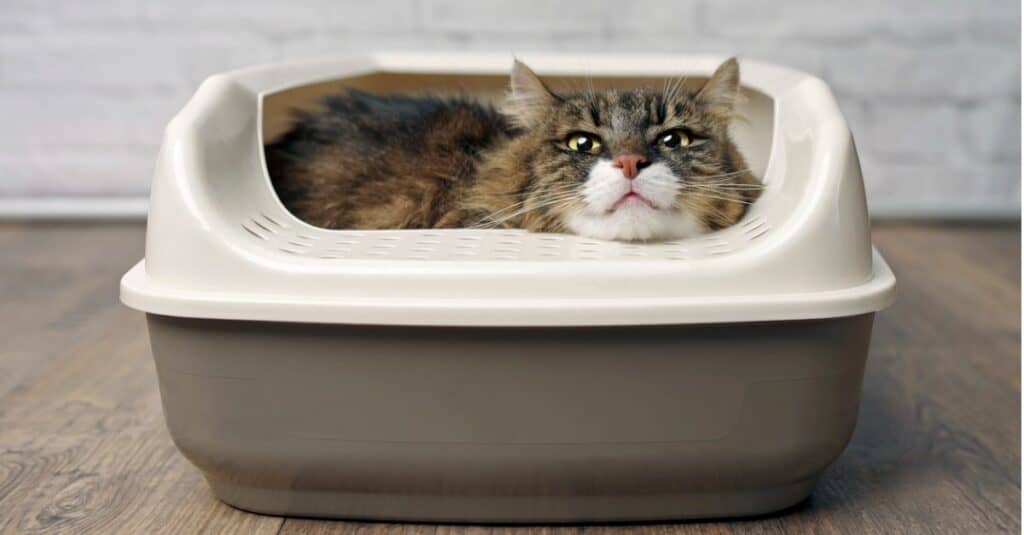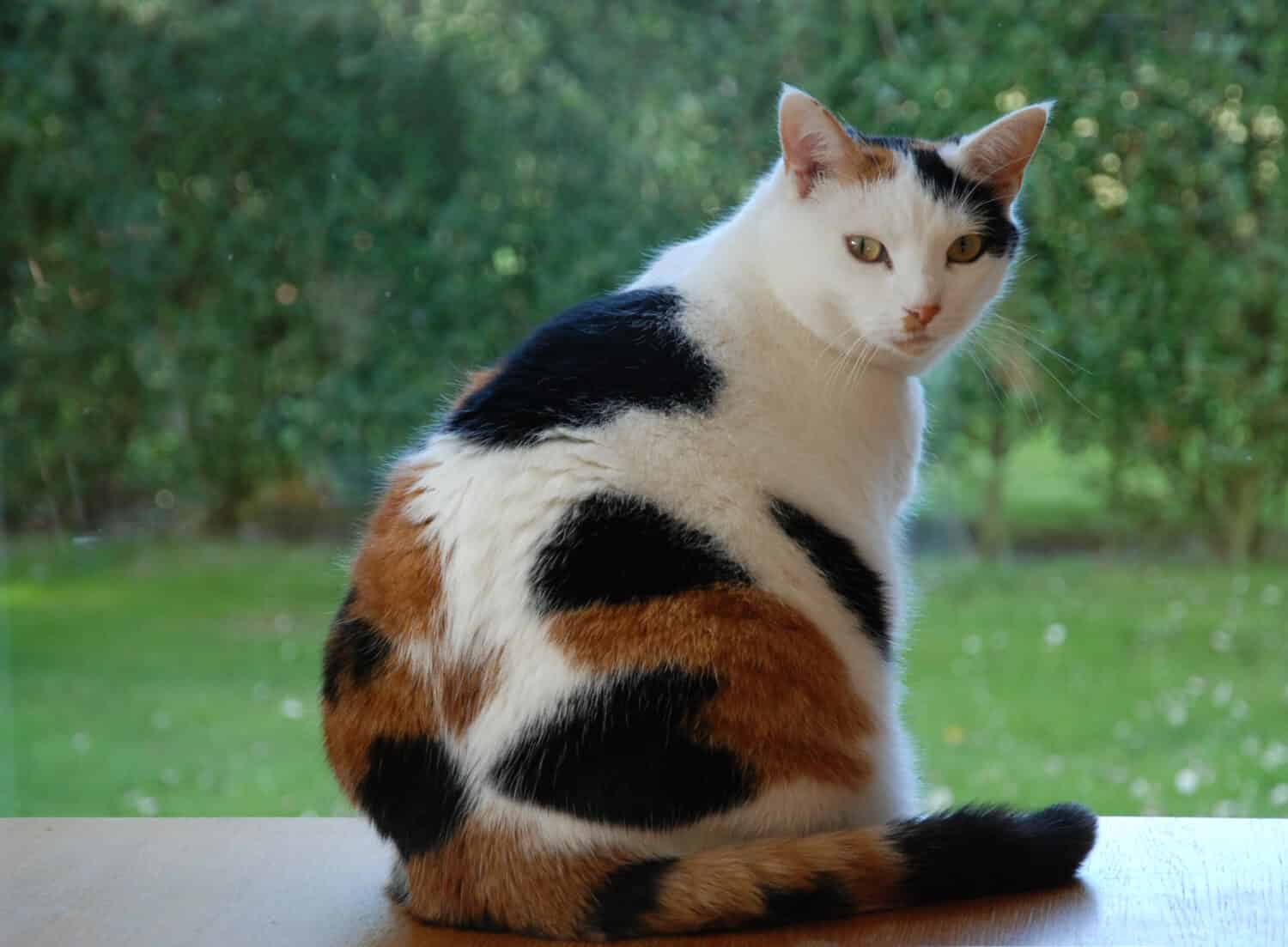Being a cat parent comes with some unusual behavior you eventually get used to. Midnight zoomies, meowing alarm clocks, purrs galore, and ankle hunting are just a few of the endearing qualities of cats as pets. But sometimes, the behavior isn’t just odd — it’s downright unsanitary. And concerning! Is your cat pooping and peeing outside the litter box? Learn why this happens and what you can do to instantly curb the behavior!
Cats Pooping and Peeing Outside the Litter Box: Reasons Why
Medical Reasons
Urinary tract infections (UTIs) can be painful, and that could be one reason your cat is pooping or peeing outside the litter box. Bowel movements can cause a lot of discomfort, and they may start to associate the pain with their litter box. They might also choose alternative places to relieve themselves due to constipation, diarrhea, or bowel inflammation. Although you’re having to deal with the cleanup process after these events, when kitties poop or pee outside the litter box, they’re communicating with you.
If they’re physically uncomfortable, this may give them a sense of urgency. That is when these accidents occur most often. There are other painful factors that contribute such as bladder stones, cystitis, and urethral obstructions. You should also determine if there are mobility issues, as there may be arthritis affecting your kitty as well. Ultimately, this is a time for listening and determining if there’s an underlying medical reason for the unusual behavior.

Although it’s inconvenient, pooping and peeing outside of the litter box is a form of communication.
©savitskaya iryna/Shutterstock.com
Behavioral Reasons
Cats poop and pee outside of the litter box due to behavioral issues too. Maybe there is a new family member or a new pet in the home. You may have moved recently, or there is some kind of interruption in your cat’s routine. Kitties are self-assured when they have a calm, secure, and predictable environment. If it’s behavioral, the goal is to alleviate their stress. Gentle training and positive reinforcement can be applied to use the litter box appropriately.
Make sure your cat has access to hiding places and vertical spaces to escape to, especially if the issue is behavioral. If they’re feeling cramped, they need to be able to retreat into environments that contribute to their sense of safety. Food for thought: the behavior issue may be a result of your own high stress. Kitties pick up on that, so be sure you’re incorporating your own decompressing time to keep the energy of the home balanced.
Litter Box Issues
Some cats prefer open litter boxes and others prefer a closed environment. This may be a time for trial and error. Try different approaches! Cats are territorial creatures and mark their territory by pooping or peeing outside the litter box when they feel insecure or threatened. Even if there is no imminent threat, they may feel too exposed in an open litter box or in a litter box placed in a conspicuous environment.
There are times when your kitty is letting you know the litter box needs to be scooped. Cats are clean animals and may be alerting you to an environment that is simply not up to their standards. Try scooping more frequently! If you use strong chemicals to clean the litter box, your cat may find those scents offensive. This is yet another reason your cat may prefer to go elsewhere. If you have a multi-cat home, having multiple litter boxes for each of your cats is a surefire way to make them more comfortable!

It may be medical, it may be behavioral, or it may be the litter box itself!
©iStock.com/Lightspruch
How to Stop Your Cat From Pooping Outside the Litter Box
Step 1: Rule Out Medical Issues
When cats feel sick, you might see changes in their appearance or behavior. But cats are notorious for hiding their illnesses — they need your watchful eye. You may notice they are not the social butterfly that they normally are. Their hearty appetite may change, there may be discharge coming from their eyes or nose, or their energy levels may shift. Look out for high sensitivity to touch in certain areas of their body. Any of these changes warrant a visit to your vet.
Your feline friend may be dealing with something only a vet can diagnose and treat. Schedule an appointment with a vet ASAP so they can assess the situation. If it’s a new vet, provide them with your kitty’s full medical history. There may be a tell-tale sign in there. But if medical issues are ruled out by your vet, then you’re dealing with a behavioral or litter box issue. With medical issues out of the way, you can move forward with addressing the root cause for you and your fur baby to have harmony and peace of mind again.
Step 2: Address Behavioral Issues
Try to identify any obvious stressors that could be the reason for the behavioral issue. Cats like to have a routine. Identify any changes to what they’re accustomed to. They like to play daily, and without regular mental and physical stimulation, they may get restless. This is especially true when they’re in their younger years. Try offering toys and a pad to scratch on, as this helps them discharge their energy when they’re overstimulated. Establish a schedule to create a sense of stability and reward positive behavior by giving them treats (and lots of love, of course!).
Avoid punishments of any kind, as this can frighten or stress your cat and worsen unwanted behavior. Buying a feline pheromone product could be highly beneficial. This is a synthetic pheromone that can help calm your fluffy buddy and reduce stress. When you find that there is poop or pee on the floor, clean it thoroughly and do not leave any residue. Any unclean bits left behind may encourage your kitty to continue the behavior. If you scold your cat for having soiled the floor, it only stresses them out which creates a lose-lose situation. They’re triggered, which means they’ll continue going potty outside the litter box and you’ll be increasingly frustrated.

Tend to your cat’s behavioral issues by easing the stress in their environment and offering plenty of play.
©Nils Jacobi/Shutterstock.com
Step 3: Address Litter Box Issues
A good rule of thumb is to provide one litter box per cat at minimum, though a larger home could do with two in different parts of the house. Keep in mind that some kitties like enclosed environments. They’re in a vulnerable position when they’re going potty and a hood on the litter box could make them feel safer. Some cats are the opposite and prefer it to be open. They may feel trapped in an enclosed litter box. Try different types and see which option they respond to.
Other Tips for Preventing Litter Box Problems in Cats
Avoid placing litter boxes near noisy appliances or in high-traffic areas. Make sure there is enough litter depth so that they have enough to cover their waste! If there is more than one cat, there should be a litter box in different areas. Scoop the poop every day, preferably twice or three times a day as they go. If you have to change the litter box to a different style, do so gradually. A sudden change may only further upset your kitty. Transition over a period of two weeks for best results.
Tips for Introducing a New Litter Box to a Cat
Even if your cat is pooping outside the litter box, they can still smell where they’re supposed to go. Instead of throwing out the old and introducing something completely new into the home, move gradually and with intention. So long as the location is quiet with little traffic, place the new litter box next to the old one. Scoop a bit of the old, smelly litter into the bright, new, and shiny litter box. Cats like their personal brand and they’re more likely to use the new litter box if it smells familiar. After the first use, offer up a treat. With time, your kitty will be using the new litter box and you can finally get rid of the old one!

With patience and persistence, you can get your kitty feeling comfortable in the new litter box!
©iStock.com/Lightspruch
Thank you for reading! Have some feedback for us? Contact the AZ Animals editorial team.








